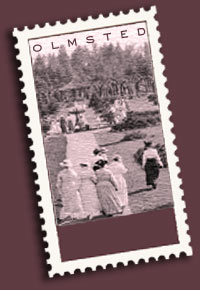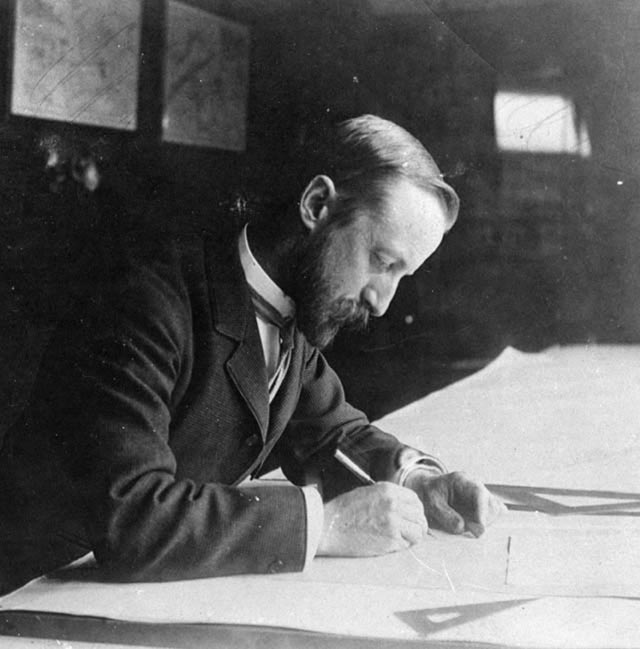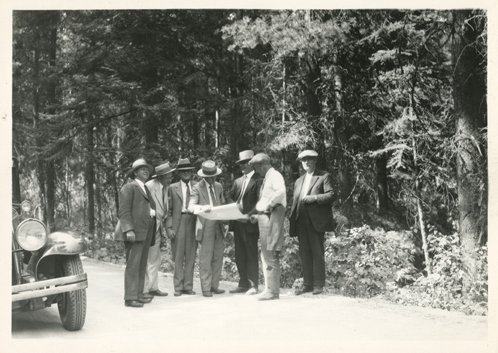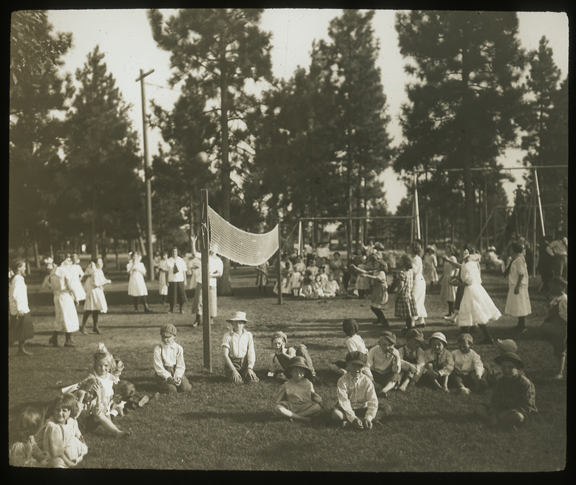
1891: Coeur d'Alene Park becomes first City Park
Platted in 1883, Browne's Addition was one of Spokane's first neighborhoods, and included a section of nearly ten acres of land for public use. Granted by A.M. Cannon and J.J. Browne, this area, known as Coeur d'Alene Park, was not officially recognized until 1891. The land functioned as Spokane's first public park, and was lauded in the Olmsted Report of 1908 as one of the best-kept parks in the city. This early gifting of public park space set a precedent for future donations from the city's wealthiest citizens.
1897-1903: Liberty Park and Corbin Park established
In August of 1897, banker F. Lewis Clark donated a portion of land in the East Central neighborhood for public use. These twenty-one acres of land, known as Liberty Park, covered rough terrain, and although City Council was unable to secure funds to sufficiently grade the land, the space was still enjoyed by neighborhood residents. In 1901, Daniel C. Corbin deeded a former racetrack to the City after platting the surrounding land for homes in an area that would be known as Corbin Park. Jay P. Graves followed the example of these leaders by donating the land for Manito Park in 1903.
1906: John Olmsted's first visit
Though the donations of civic leaders were generous, the city still boasted fewer than 200 acres of parkland by mid-decade. Environmental activists realized that if the city failed to act, Spokane's natural landscapes may be permanently altered by the construction of industrial buildings or sprawling neighborhoods. Businessman Aubrey White worked to rally leaders in support of a plan for city beautification, and personally contacted famed landscape architect John C. Olmsted, who was working on a design in Seattle. Olmsted agreed to visit Spokane on his way back East in the winter of 1906 and was given a tour of the city by White.
1907: Board of Park Commissioners established by charter
In April of 1907, Spokane City Council voted to establish a non-partisan Park Board to manage the growing acreage of parkland in the city. Parks had previously been administered by the Mayor and other elected leaders, but this group had inefficiently managed funds and was too easily influenced by conflicts of interest. The new Board was comprised of ten prominent businessmen, who elected Aubrey White as President. White's first order of business was to seek the advice of an expert in designing a park system for the city. Although John Olmsted had already visited the city at White's personal request, the establishment of the Park Board allowed White to make an official offer to Olmsted to prepare a report.
1908: Olmsted Plan presented to the Parks Commission
After numerous visits with Aubrey White during 1907, John Olmsted agreed to prepare a report for $1000, plus fees. Olmsted made several visits to Spokane along with his associate James Dawson between 1907 and 1908, and together the two prepared an analysis of conditions for parks in Spokane that evaluated the city's naturally rugged topography and aimed to place a small park within walking distance of every home. Although the plan was presented to the Parks Commission for approval in May of 1908, the full report was not released until 1913 to discourage speculation.
1910: $1,000,000 bond approved by vote
In addition to the initial $1000 fee to pay for Olmsted services, and Board members realized a large sum of money must be secured to acquire the recommended 2000 acres of parkland. After being turned down by vote in 1909, the $1,000,000 bond was passed in 1910 with the active support of newspapers and labor groups. The bond money allowed the Board to augment the city's park space to over 1900 acres, an impressive increase from the meager 170 that existed ten years earlier.
1913-1918: Spokane hailed in newspapers as "park city"
The Spokane Daily Chronicle wrote in 1913: "Spokane leads all cities in the United States in number of parks…To Spokane belongs the title of being the Park City of the United States." At the time, the city owned proportionally one acre of park land for every 58 inhabitants, which compared to Portland's acre per 414 residents. Both the Chronicle and the Spokesman-Review praised the success and popularity of the parks, with headlines stating: "Spokane Takes its Supper under Trees in the Parks" and "Spokane is Grecian in love for outdoor recreation." Such positive public indicates that the Park Board was successful in implementing the Olmsted plan in an effort to beautify the city.
1920: Aubrey White retires as Park Board President
After over a decade of service, Aubrey White ended his tenure as Park Board president, passing responsibility to the equally skilled and enthusiastic Park Superintendent John W. Duncan, who would continue to serve the Park Board until 1941. At the time of White's leave, the city owned over 2000 acres of park land, and continued to develop land under Duncan's leadership.
Parks Today:
Parks continue to be a popular attraction to Spokane visitors today. Since the implementation of the original plan, the Park Board has evolved into the Spokane Parks and Recreation Department, and has developed land for public use along the Spokane River, the Centennial Trial, and several other areas in the city. The Olmsted presence in Spokane is remembered with events like the Centennial Celebration of Olmsted-Designed Parks that was hosted by the Cannon Hill-Manito Neighborhood Council in 2008. The city owns over 4000 acres of park land today, and the Olmsted Legacy continues to be evident in the public use and appreciation of Spokane's park system.


